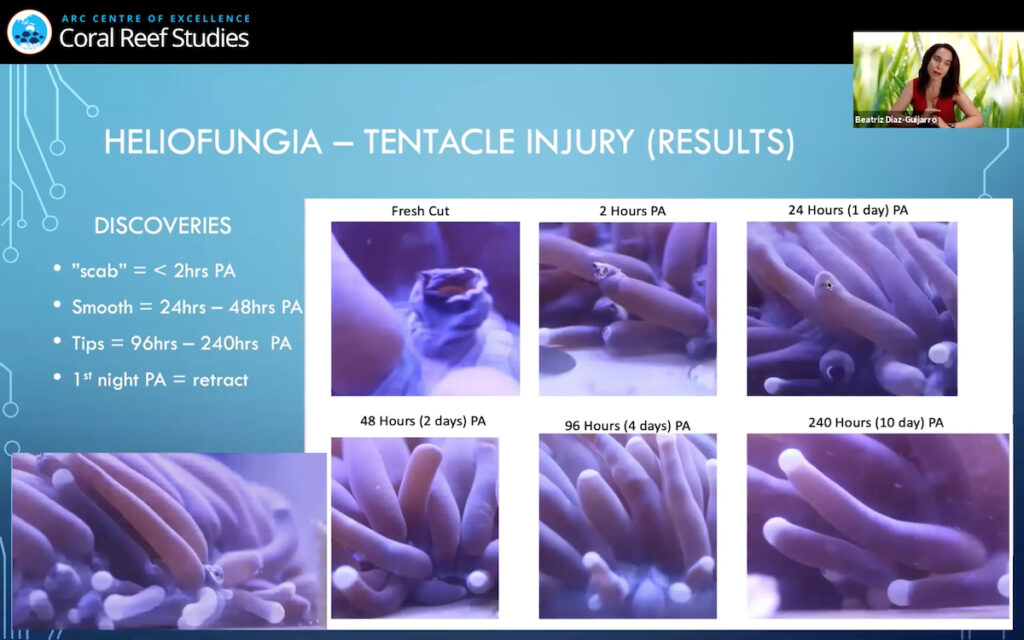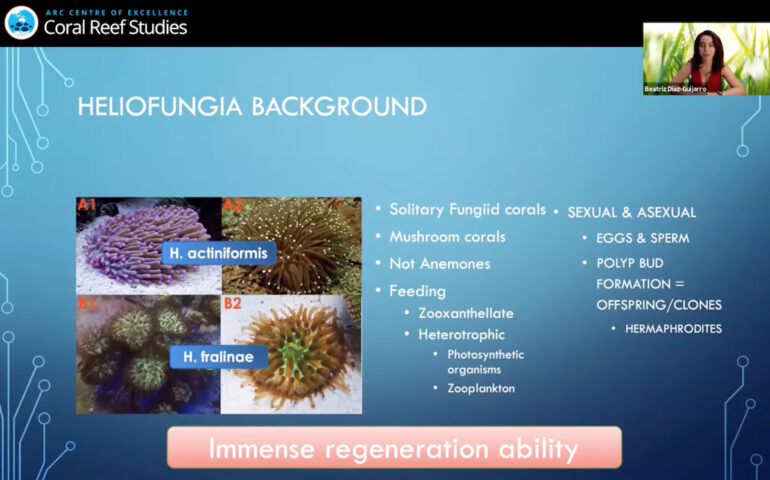Heliofungia plate corals have incredible regenerative properties. However, very little is known about the molecular mechanisms involved in these processes. In one of the recent Coral Reef Week virtual presentations, Beatriz Diaz-Guijarro from James Cook University shares her research on the subject.
Beatriz first measured the regenerative properties of Heliofungia by cutting tentacles and documenting the recovery. We were surprised to see just how quickly the cut tentacle healed and regrew, becoming a completely intact tentacle in 10 – 14 days.

The main aim of this project is to obtain mRNA expression data for regeneration in Tubastraea and Heliofungia and compare these with developmental data for the same species, in order to better understand how the processes of development and regeneration relate to each other.
In the second experiment, Beatriz looked at heat stress on Heliofungia noting that the juvenile colonies took longer to bleach than adults. Since the experiment, the bleached corals under her care have yet to regain any symbiotic algae however with daily zooplankton feeding they are still alive with happily extended tentacles during the day.
Biography: Beatriz completed her BSc in marine vertebrate zoology at the University of Bangor, UK, with the goal of working with marine mammals. During summer breaks she volunteered at Seychelles with Global Vision International (GVI) researching the damage a tsunami had caused on coral reefs. She continued her scuba diving education up to reaching dive instructor certification.
After her BSc she moved to Townsville, Australia where she completed an MSc in natural resource management, during which she learned she had a passion for molecular genetics. Beatriz went on to intern and work at the Australian Institute of Science (AIMS) where she continued to develop her skills and passion for molecular genetics. She is currently doing a PhD at James Cook University, Townsville.
Regeneration in Heliofungia – Beatriz Diaz-Guijarro



